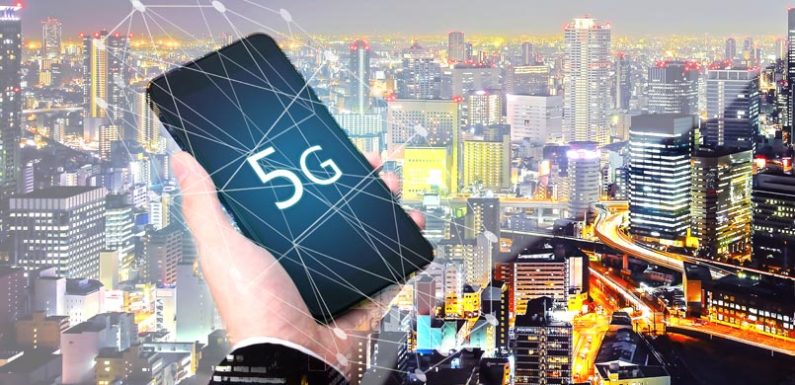
You likely already have some idea what 3G, 4G, and 5G are. 4G is what your mobile phone displays in the top bar when photo messages download effortlessly and web browsing is fluid. Your phone might show a 3G connection when you’re in a remote area, and struggling to load a map app to navigate your way back to better service. And you’ve probably heard some discussion of 5G, alongside space opera-worthy predictions of autonomous vehicles, virtual reality, holographs, and most importantly, no buffering on video streamed on mobile devices.
But what’s really the difference between the mobile networks? Why does your phone suddenly default to 3G in some places and what does that mean for your browsing experience? And what does the “G” stand for anyway? Hint: it has nothing to do with the g-forces astronauts are subjected to; not even 5G is that sci-fi.
3G (third generation)
3G is the third generation mobile technology, used by mobile phones and broadband devices and networks. It’s the successor to the earlier 1G and 2G networks, which supported just calling, text messaging and multimedia messaging.
3G, introduced at the turn of the millennium, provided enough bandwidth for web-browsing on mobile phones and through mobile broadband devices. Upgrades and later editions of 3G offered more speed, meaning today a 3G connection will allow you to use maps and apps and stream video. The average download speed for 3G networks in the UK is around 6 Megabits per second (Mbps), a speed at which it takes about 1 second to download a 1MB photo and 1 minute to download a 5-minute YouTube video in standard definition (about 40MB).
However, as the chart below, using data gathered by Open Signal between December 2017 and February 2018, 3G speed varies between the networks. In general, 3G is slower than most forms of fixed-line broadband in the UK, and performance, particularly on video calling and gaming is limited by relatively high latency, the amount of time it takes for a data packet to be sent from a source to your smartphone
Nearly all mobile phones in the UK can use both the 3G and 4G networks. However, your phone will default to the slower 3G if a 4G network isn’t available in your area.
| Network | 3G download speed | Latency |
| EE | 7.78 Mbps | 65.8ms |
| O2 | 4.76 Mbps | 80.64ms |
| Three | 6.95 Mbps | 71.91ms |
| Vodafone | 5.24 Mbps | 66.81ms |
4G (fourth generation)
4G is the fourth generation mobile network, launched in the UK in 2012. Standard 4G offers maximum theoretical download speeds of 150 Mbps and upload speeds of 50 Mpbs (with more advanced versions offering theoretical speeds of 300Mbps). But under real-world conditions speeds are around 20 Mbps downstream and 10 Mbps upstream. At these speeds, mobile internet is faster than ADSL broadband but slower than superfast fiber broadband.
Like 3G, 4G is also hampered by greatest latency than fixed-line broadband. And it isn’t always available: phones on the main UK mobile networks manage to connect to 4G—rather than 4G— 74% to 86% of the time, with Three being the worst performer.
| Network | 4G download speed | Latency of 4G Network | Availability of 4G |
| EE | 29.02 Mbps | 40.35ms | 86.62% |
| O2 | 15.16 Mbps | 42.84ms | 74.17% |
| Three | 22.55 Mbps | 47.23ms | 83.76% |
| Vodafone | 20.07 Mbps | 40.6ms | 79.45% |
5G (fifth generation)
5G is the most speculative fifth-generation mobile network, which will offer theoretical download speeds of between 1 Gigabit per second and 10 Gbps, outstripping even the fastest full-fiber connections in the UK. 5G will have larger bandwidths—reportedly 1,000 times greater per unit of area than 4G—allowing more users to comfortably access the network simultaneously.
That new density, coupled with low latency (predicted to be less than 1 millisecond) will support a burgeoning ‘Internet of Things,” a network of devices, autonomous vehicles, and appliances hooked up to the web. It will also make mobile broadband tariffs more viable alternatives to fixed-line broadband.
5G doesn’t exist outside of laboratories yet. In 5G trials, EE achieved sustained download speeds of 2.8 Gbps in November 2017. But even if you somehow gained access to the EE test lab, your mobile phone, equipped for 3G and 4G, wouldn’t be able to access it.
The first 5G-enabled phone, from Samsung, isn’t expected to hit shelves until June 2019. The UK government is pouring £160m into 5G innovation but doesn’t expect to see a quick return on their investment. They don’t anticipate a commercial rollout of 5G before 2025.

